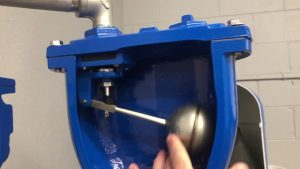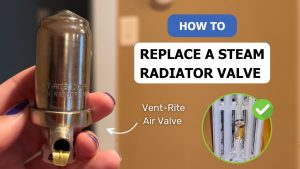We will inevitably meet some failures in the process of using the cast steel gate valve. How should we deal with these failures? Today we will introduce the solutions to solve faults of the cast steel gate valve.
Three common faults of the cast steel gate valve can be solved as follows:
1. Crack of the cast steel gate valve
The cast steel gate valve cracking (or bottom deformation) mainly appears in the Z944/Z964 parallel plate structure products. It occurs when the bottom of the gate plate of the cast steel gate valve directly hits the valve body. Also, it is very easy to occur when the closing stroke is not set or the limit fails due to improper commissioning of the electric valve.
2. Crack on the sealing surface of cast steel gate valve
Cracks on the sealing surface mainly occur in cast steel valves made of alloy steel, which are often caused by unreasonable processes. Reasonable material selection and reasonable control of welding process parameters can avoid this.
3. Jam of cast steel gate valve
The gate jam of the cast steel gate valve shows that the gate is stuck on the guide rail side of the middle cavity of the valve body, or even separated from the valve stem. It is mainly caused by poor design and manufacture, such as the improper size of guide rail contact width and rough guide rail surface.
When the gate is stuck in the seat of the cast steel gate valve and the valve stem is forcibly lifted, the T-shaped groove of the gate often breaks or deforms to avoid the “abnormal boost” factor. The temperature difference and closing force are two major reasons worth paying attention to.
There is a typical temperature difference operating condition. If cast steel valves are closed in a cold state and then opened in a hot state, the closing torque of the gate will increase and resulting in the gate wedging due to the thermal expansion and elongation of the valve stem.
If the hot state is closed and the cold state is opened, the crotch width will become larger due to the thermal deformation of the valve seats on both sides. The cold state will make them shrink and smaller, resulting in wedging of the gate. If the above two states are accompanied by tight “closing force”. If the electric drive is not properly adjusted or the booster mechanism such as a wrench or lever is improperly used, there is an increased chance of wedging of the gate of the cast steel gate valve.
ZECO has a complete product quality management system. It has passed certifications such as API6D, CE/PED, ISO9001, IS014001, ISO18001, WRAS, FM and TS. Also, it has been recognized by oil and gas companies. ZEC0 has long-term cooperation with China National Chemical Equipment (CNCE) and China Petroleum & Chemical Engineering Survey and Design Association (CPCESDA).
ZECO has developed its laboratory for R&D of international standard valve design innovation and validation, including PT, MTUT, FE testing. If you have any need, welcome to consult us.












